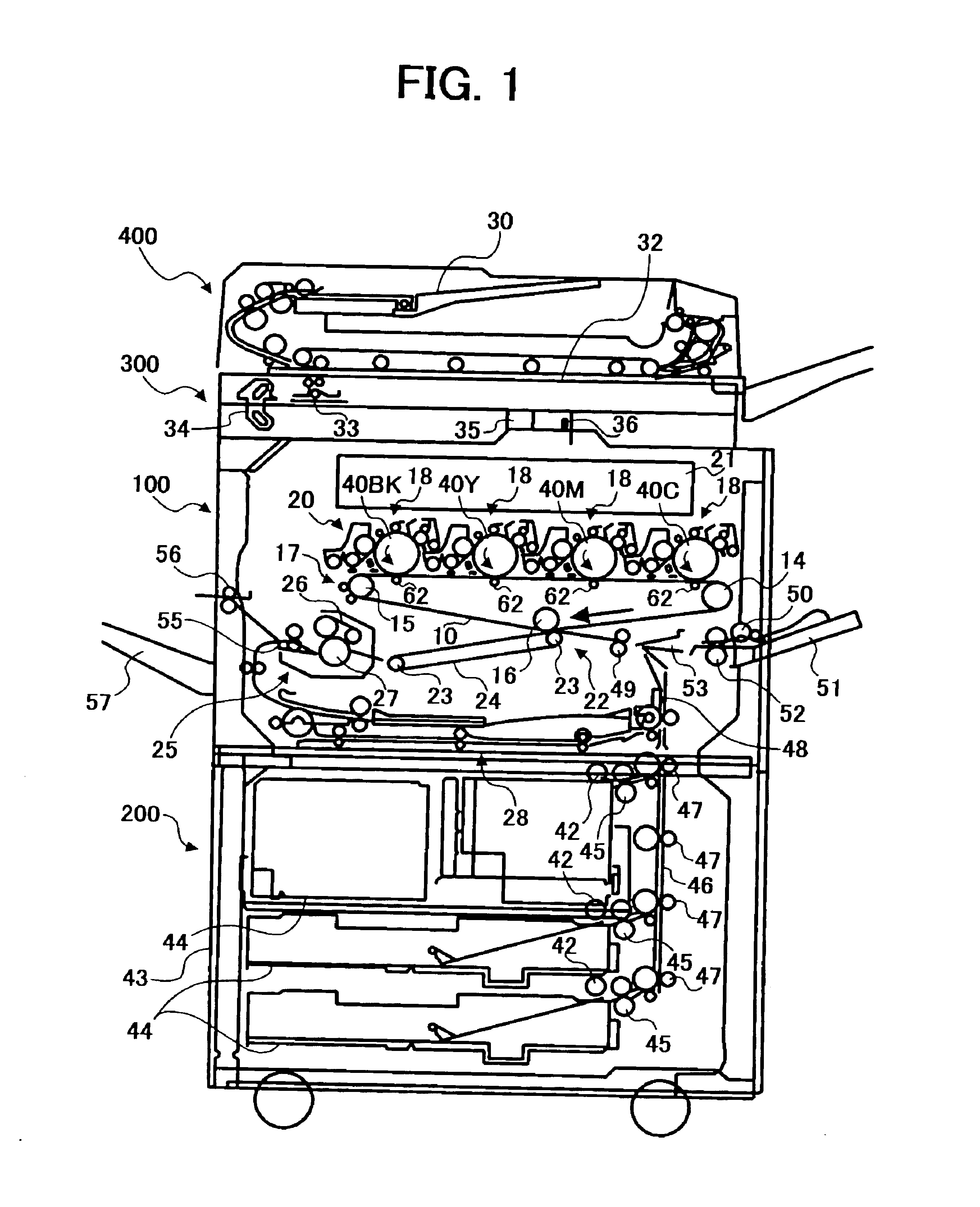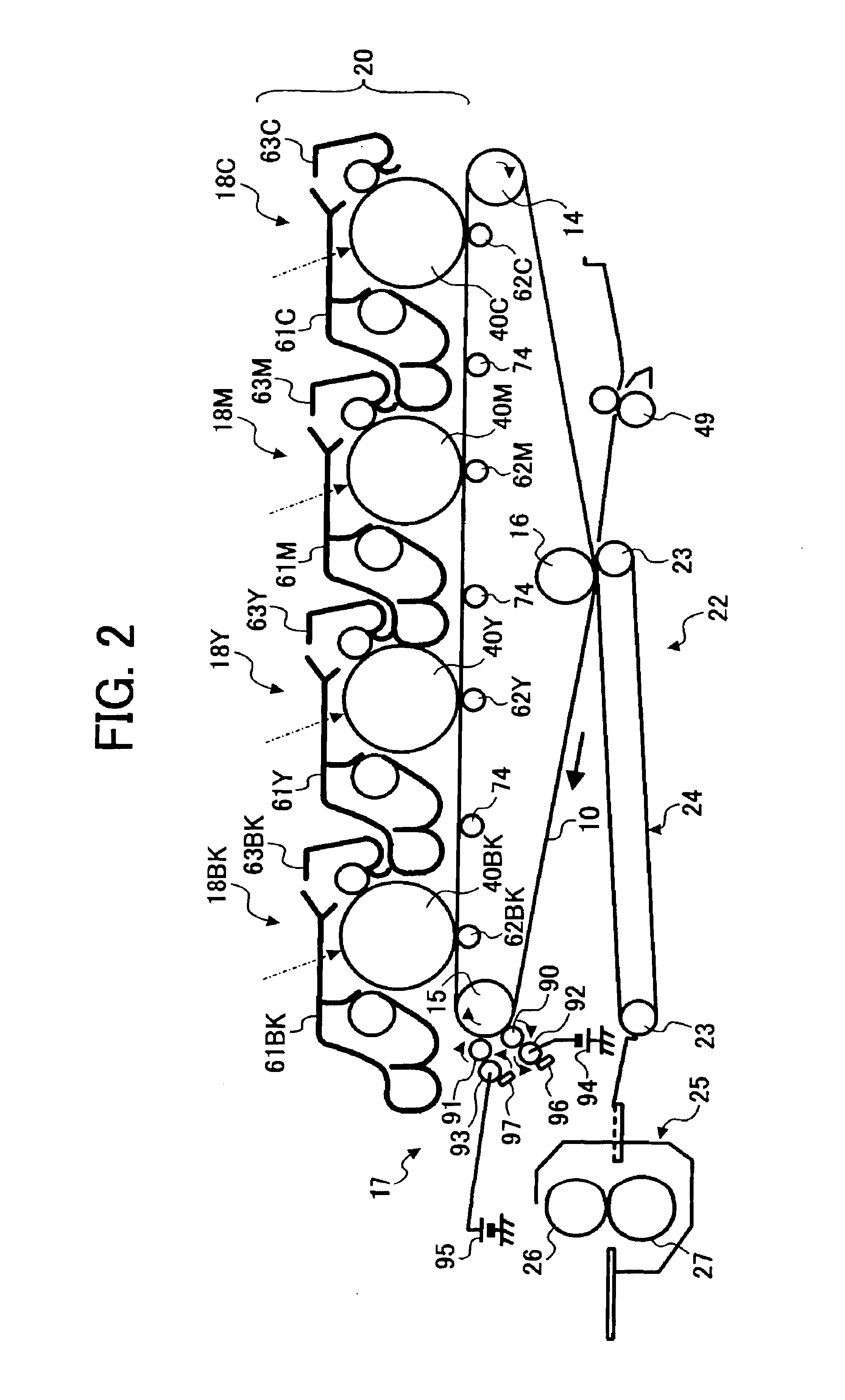However, the organic
pigment colorant forms agglomerated primary particles of the organic
pigment in a
drying process of manufacturing the
pigment and the above-mentioned
background color toner manufacturing method cannot dissolve the agglomeration.
Therefore, the colorant is difficult to disperse in the binder resin and the agglomerated primary particles of the pigment remains in the toner.
However, the agglomerated particles are still difficult to finely disperse until they do not affect the optical permeability of the toner even by using the above-mentioned method.
However, only agitating a liquid-solution mixture cannot sufficiently disperse a colorant due to insufficient shearing force.
However, the method has a problem that a large quantity of the
organic solvent is needed to dissolve the binder resin and that the pigment tends to reaggregate when removing the water and
organic solvent.
However, since the binder resin and the resin to disperse the pigment have different solubilities from each other, the
resultant toner has a high
refraction index and does not have sufficient transparency.
When the content of the additive is small, the fluidity of the toner deteriorates and the toner tends to adhere to each other, resulting in the occurrence of toner filming on a photoreceptor, image-transfer irregularity and
white spots on a
solid image, a hollow defect on a
thin line image, background
fouling, and an increase of toner scattering.
Therefore, the
resultant toner does not have sufficient glossiness and transparency.
In addition, an excessive addition quantity of the additive causes a toner-scattered image in a
thin line image, and particularly when a
thin line image is produced in a full-
color image, the toner quantity increases because at least two or more color toners have to be multiplied and the tendency remarkably appears.
Particularly, toner having a
small particle diameter tends to have an excessive charge due to the mutual friction of the toner because of its large specific surface area.
However, the surface-treated silica cannot by itself sufficiently prevent the dependence of the toner chargeability on the environment, while the titania effectively prevents the dependence of the toner chargeability on the environment, but deteriorates the transparency and color reproducibility of the
resultant toner.
Particularly, for color toner that has to be stable for a long time and to produce an image having high
image quality and color reproducibility, the deterioration of the transparency and color reproducibility of the toner is not preferable because that is one of the largest factors in deteriorating the
image quality.
Coating a large quantity of the oil on the fixing member to increase the releasability causes an oil spot on a receiving paper and a cost increase.
In addition, a space for a tank containing the oil is needed, resulting in a problem that the fixer is enlarged.
However, a toner having such a resin tends to decrease the intermolecular agglomeration when melted upon application of heat and to adhere to the fixing member when passing the member, resulting in occurrence of a high-temperature offset phenomenon.
However, as for the color toner in which the release agent is dispersed, the toner does not have sufficient transparency because the release agent is present on the surface of the toner, and the fluidity of the toner also largely deteriorates.
Further, the release agent has to sufficiently filter from the color toner having a low
viscosity and the offset prevention is difficult.
To the contrary, a toner having high
viscosity such as a black toner has a high intermolecular agglomeration when melted upon application of heat and the offset can be prevented if only a small quantity of the release agent filters from the toner, but the toner is not sufficiently melted and does not have sufficient transparency, color reproducibility, and glossiness.
However, there are some problems to be considered when recycling the residual toner on the photoreceptor and the transferer for development.
On an area of the photoreceptor contacting the blade, the agglomerated toner due to the mutual adherence of the toner and fine particles of the toner due to the pulverization thereof tend to be formed, resulting in deterioration of the toner properties.
Consequently, when such a toner is recycled for development, the deteriorated toner such as the agglomerated toner and the pulverized fine particles thereof occasionally causes an abnormal image such as a decrease of the
image density, background
fouling, and toner scattering.
This is considered to be caused by the toner tending to adhere to each other because the additive such as silica and titania to increase the surface fluidity of the toner is not uniformly adhered to the surface of the impacted toner, or the additive is released from or buried in the surface thereof.
Therefore, image-transfer irregularity and
white spots on a
solid and a
halftone image, image-density deterioration, background
fouling, and toner scattering occur, and images having stable
image quality cannot be produced over a long time.
Therefore, the fine particles of the toner tend to be formed, causing background fouling of the resultant image,
contamination inside the image forming apparatus by the toner, and deterioration of the developability.
Further, the mutual toner adherence increases and tends to be agglomerated because the additive such as silica and titania is easily buried in the toner.
In addition, the toner filming on the photoreceptor occurs and the fluidity and
heat resistance of the toner deteriorate.
However, the free inorganic fine particles cause the toner filming on a photoreceptor.
The agglomerated fine particles scratch the photoreceptor and the inorganic fine particles accumulate in the scratch to cause image defects such as
white spots.
In addition,
image density deteriorates, and background fouling and toner scattering increase as time passes.
Therefore, images having stable image quality cannot be produced over a long time.
However, depending on the mixed and adhered conditions of an additive, the inorganic fine particles releasing from the toner increase and cause the toner filming on the photoreceptor and the developing sleeve.
The inorganic fine particles having a larger particle diameter than that of the ordinary fine particles tend to scratch the photoreceptor, and the fine particles accumulate in the scratch causing image defects such as white spots.
 Login to View More
Login to View More 


